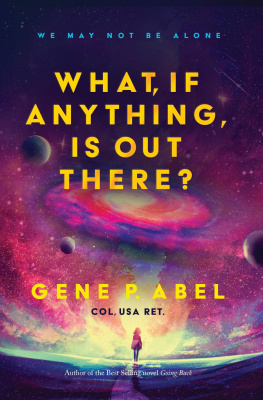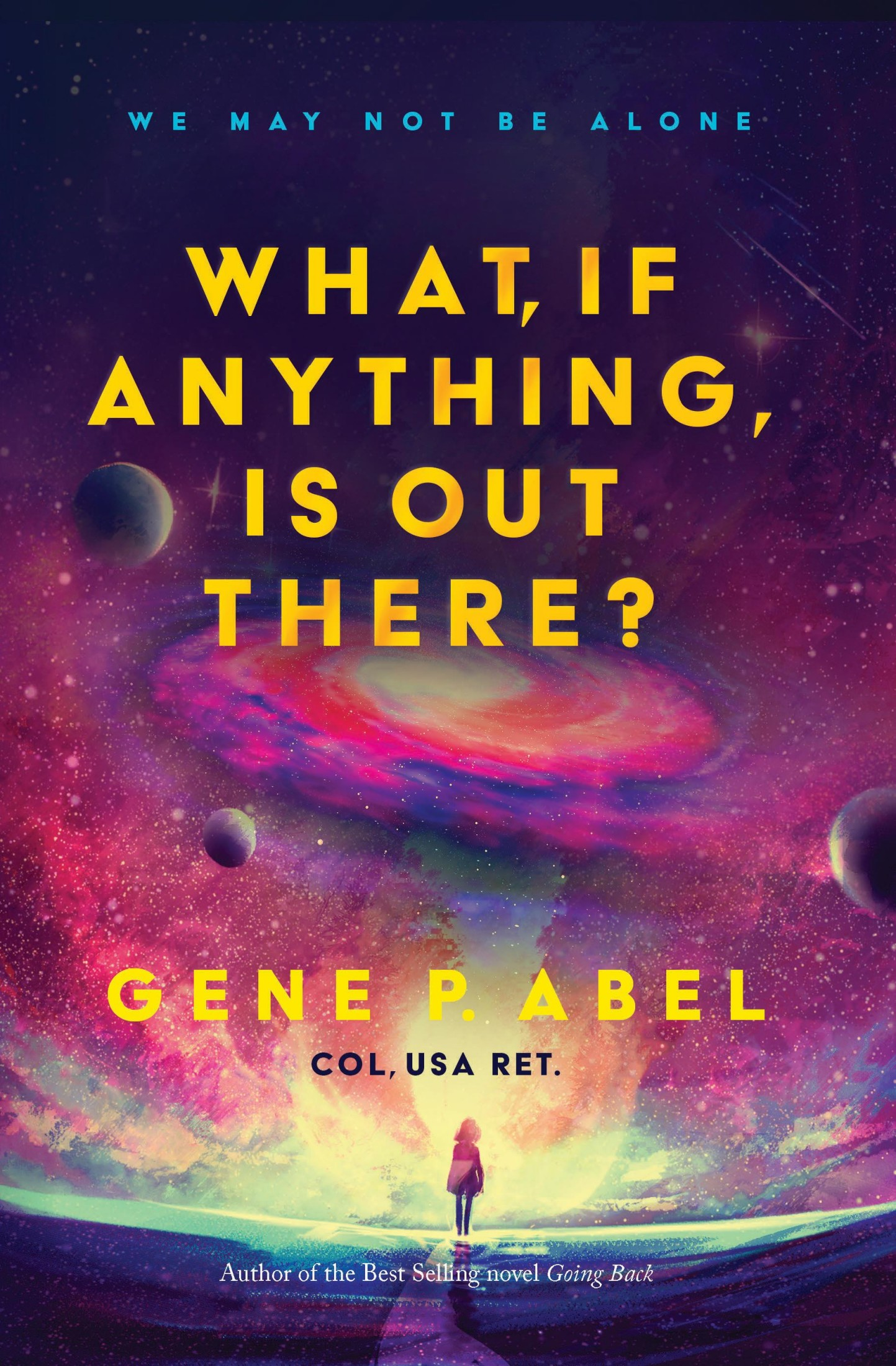
My sincere thanks to my beautiful wife, Susan Anne
for her help with my book.
INTRODUCTION
Man, for a long time, has sought to learn about his environment, other species, and most recently about other worlds and planets in the universe. This began many years ago when astronomers like Galileo first built telescopes to look into the heavens and see what was taking place.
We look at bees to see how they organize, and in so doing we have learned that they appear to communicate with each other and have developed a highly efficient society to propagate their species and live their lives. We watch migrant birds and see how they seem to know the changes in the seasons and follow a leader from one part of the earth to the other. We record the sounds of whales, who have a very distinct society and definitely appear to communicate with each other.
We have been interested in the deepest parts of the ocean and, with the technology that we have developed, have begun exploring such remote places as the Mariana Trench, which goes down almost seven miles. Due to these efforts, we have discovered life in our oceans like no other that we have ever seen before and even a few species that are not carbon-based. They exist in environments that would be toxic to other living creatures, around hydrothermal vents on the floor of the deepest parts of our oceans. The temperature at these vents ranges up to 700 degrees Fahrenheit, and the vents spew highly toxic sulfur compounds into the ocean. Despite conditions that would be deadly to almost all life on Earth, scientists have found huge, red-tipped tubeworms, ghostly fish, and strange shrimp with eyes on their backs. There are species who live so deep in parts of the ocean that there is absolutely no light, and some of these species have developed a way to illuminate their surroundings by an incandescent light (bioluminescence) they give off from their bodies.
We have done much to begin exploring worlds beyond Earth, first by orbiting the planet and then by our trips to the moon. We have sent many probes to celestial bodies and have landed on these distant worlds. The more recent probes are beginning to sample the atmosphere and analyze the soil. We have perfected satellites that are measuring things around our sun and the planets and are discovering things that we never knew before. Deep Space 1 (launched October 24, 1998) went into solar orbit. Voyager 1 (September 5, 1977) and Voyager 2 (October 20, 1977) were sent out in space. Cassini (October 15, 1997) was sent to orbit Saturn, and Messenger (August 3, 2004) circles Mercury. Viking 1 (August 20, 1975) was the first spacecraft to land on Mars. On July 30, 2020, we launched the Mars 2020 Perseverance Rover that will land on February 18, 2021. The United States, China, and Russia have successfully landed unmanned spacecraft on the moon.

Mars 2020 Perseverance Rover (photo courtesy of NASA)
On January 3, 2019, the Chinese landed their rover, Yutu-2 , on the far side of the moon. As it was exploring the moon, its camera spotted something glittering in the dust at the bottom of a large crater. Everything on the moon is covered by a gray dust, and something glittering was out of place. The Chinese had their rover go into the crater and examine this object. What they found looked like a gemstone, which scientists believe was created by the extreme heat of a meteor as it struck the moon, causing the crater. Although this discovery does not indicate alien presence on the far side of our moon, it does show the extreme interest of countries on Earth about what might be discovered and the secrets that the moon holds.
We have developed and put into place the Hubble Space Telescope (launched April 24, 1990), which has produced some of the most astounding pictures and greater insight into the development of our universe and Earth itself. It has enabled astronomers to look back billions of years. The pictures we are seeing today from the Hubble telescope depict our universe as it existed as long as 13.5 billion years ago. These pictures travel across space at the speed of 186,000 miles per second (the speed of light). The distance, for example, between New York City and London is approximately 3,500 miles. This means that light would make 53 trips from New York to London every second. In one year, there are just over 31.5 million seconds. Now imagine a trip that took 13.5 billion years and you get some idea of the enormity of our universe.
In 2021, we expect to put into place the successor to the Hubble telescope, the James Webb Space Telescope. The technology employed in the Webb telescope is light-years ahead of what exists in the Hubble. What mysteries that instrument will help solve is conjecture at this point, but fascinating. In May 2020, NASA announced the next and even more powerful space telescope, named after Nancy Grace Roman, NASAs first chief astronomer and woman executive. It is expected to be in orbit by the mid-2020s.
In addition to the extensive studies that are being done about the formation of the earth and our universe using instruments such as the Hubble telescope, a great deal of work has been done by some of the most prestigious scientists on Earth to understand our history.
One line of thought postulates that intelligent and advanced civilizations existed on Earth far before what our current doctrine acknowledges. This idea says civilizations existed on Earth in our distant past, as much as one hundred thousand or more years ago. Evidence is being uncovered that shows intelligent civilizations may have existed in areas such as Mesopotamia, Samaria, Egypt, and Africa. A lost civilization has been found in the Amazon, which predates the Incas. This body of scientists believes these life-forms disappeared for some unexplained reason and much later intelligent beings developed and are what we have acknowledged as our ancestors, dating back to about 4000 BC. Some contend that these much earlier life-forms originated on Earth, while others propose they may have been of extraterrestrial origin.
There are very different opinions among experts as to the age of the Great Egyptian Sphinx. Two Ukrainian researchers believe that the Sphinx could be as much as eight hundred thousand years old, which would be a revolutionary discovery. The two scientists who support this theory are Vjacheslav Manichev and Alexander Parkhomenko, of the National Academy of Sciences of Ukraine. Their theories differ greatly from the Egyptologists who believe the Sphinx was built about 2500 BC.
Recent studies have shown, for example, it is possible to move the huge stones used to build the Pyramids over extended distances by mounting them on a sled and pouring water in front of the sled. This significantly reduces the friction between the sled and the sand, which enables the movement of extremely heavy objects such as the stones used to build the Pyramids. The next time you go to the shore pull something through the dry sand and then pull the same thing along the waters edge on wet sand, and you will see how much easier it is to pull something on wet sand.
It has also been discovered that the precision of some of the stones in the Pyramids is not as precise as some have claimed. In fact, there are gaps between many of the stones, some of which have been filled with a type of mortar that was made by burning limestone. They have been able to carbon date the wood that was used to burn the limestone and confirm that the Pyramids were probably made about 2500 BC. These most recent studies confirm the original belief by Egyptologists as to their origin. That, however, does not carry forward to the age of the Sphinx itself, which is still a huge mystery.















